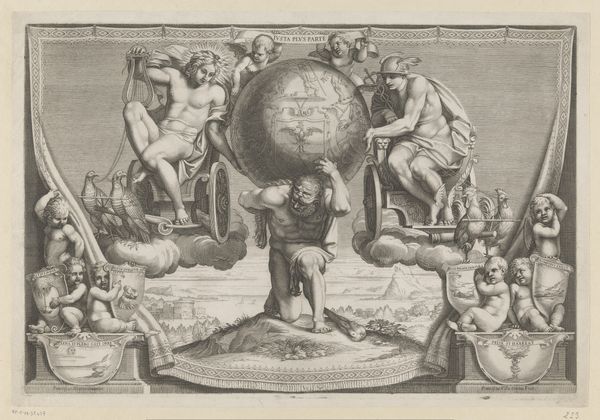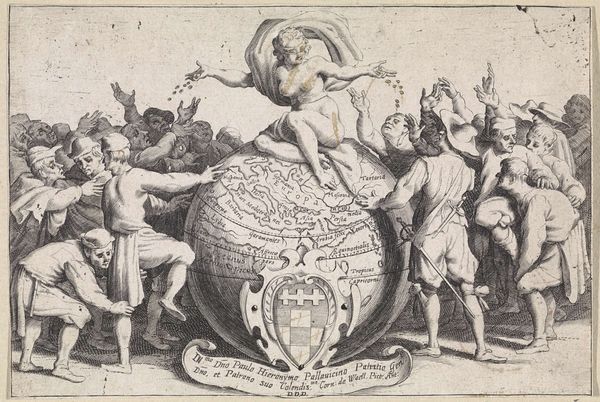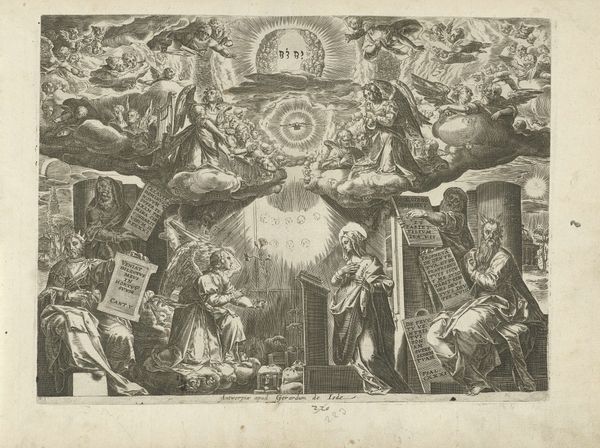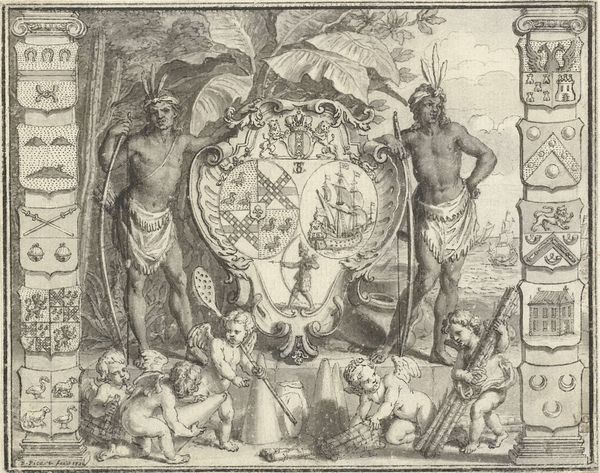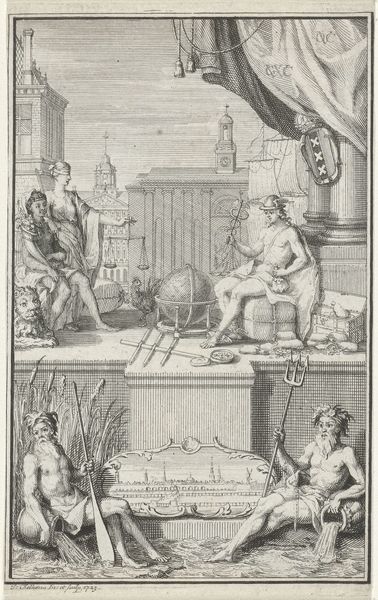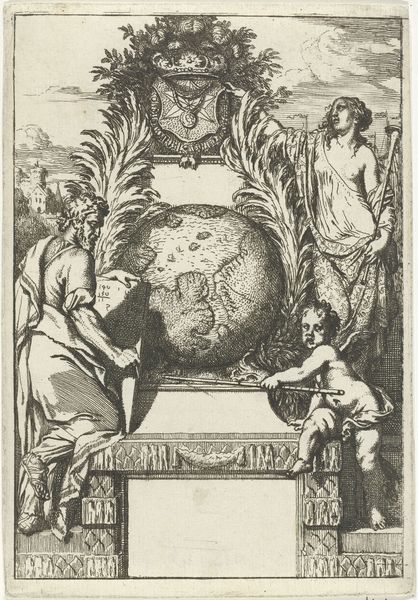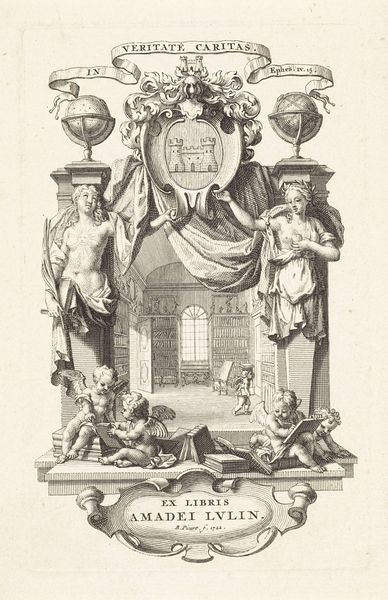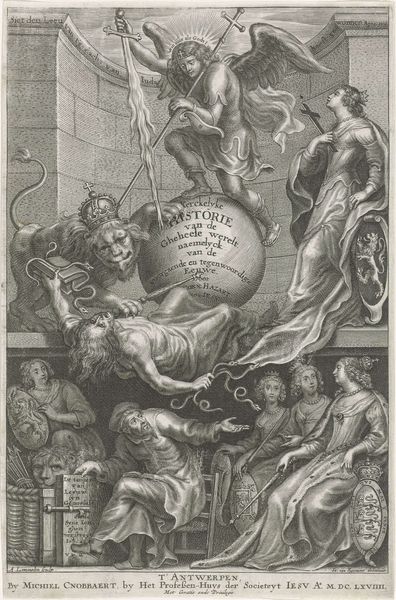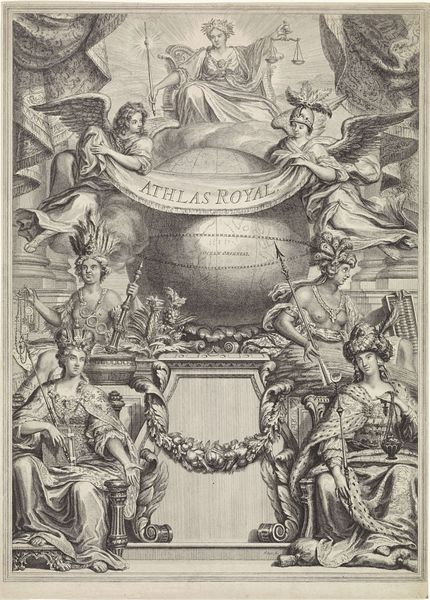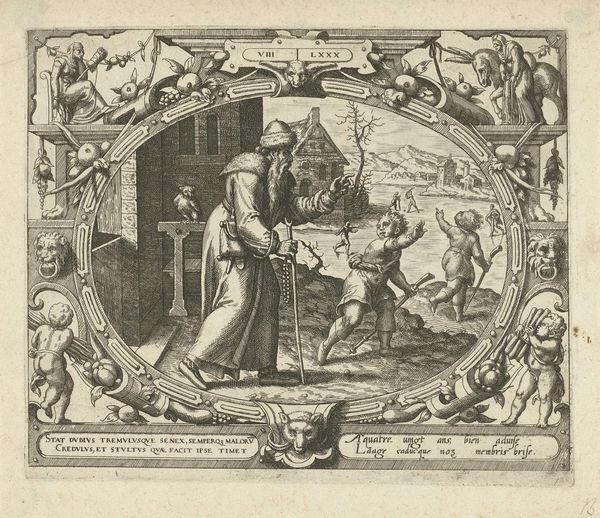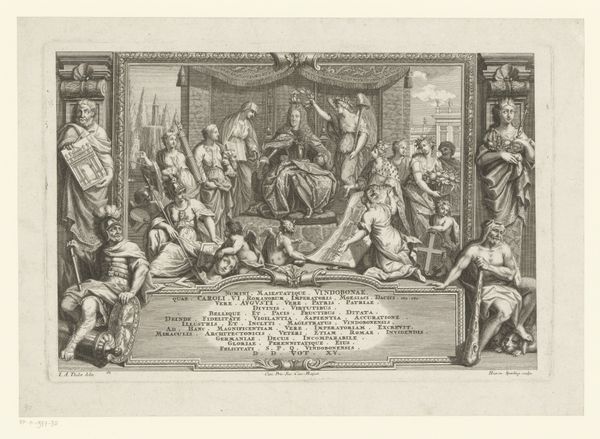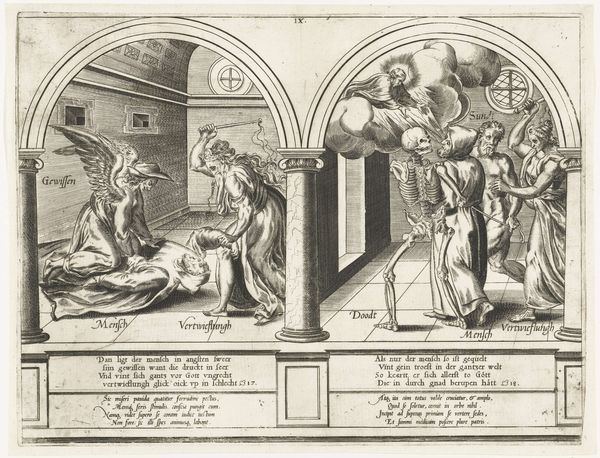
print, engraving
#
portrait
#
allegory
#
baroque
# print
#
pen illustration
#
figuration
#
form
#
line
#
history-painting
#
engraving
Dimensions: height 77 mm, width 114 mm
Copyright: Rijks Museum: Open Domain
Curator: Here we have "Winkel met cartografische kaarten," a print made between 1720 and 1772 and currently held at the Rijksmuseum. The artist is Jacob Folkema. Editor: My first impression is one of contained power. Atlas, straining beneath the weight of the world, is framed by this very decorative cartouche, while behind him, everyday life unfolds in what seems to be a busy map shop. Curator: It’s fascinating how Folkema layers imagery here. The figure of Atlas is so compelling because he embodies the burden of knowledge, of understanding the vastness of the world and its representation. The shop scene behind him then represents the consumption and commercialization of this very knowledge. Editor: Precisely! The globe he holds has strong symbolic resonance. Throughout history, globes have appeared on buildings and works of art. It isn’t only geography it represents; rather it means learning, science, power, but more than all that: order. We created maps in order to create order and organization from what was wild. And here Folkema adds to this the sense of knowledge as a "burden", almost like that old idea that "heavy is the head that wears the crown". Curator: And look how the shop interior contrasts with Atlas's powerful physique. We see well-dressed customers examining maps, completely detached from the sheer effort implied by his figure. It points, perhaps, to the privilege inherent in accessing and disseminating this kind of geographic knowledge. It also underscores that it can take work, labor, to organize a system (such as trade or scientific research or governance) but often this is hidden, not always on clear view. Editor: What’s interesting, also, is the relationship of line and texture. Atlas is well-defined in the foreground and given muscular emphasis, whilst the details of the books and maps blur and bleed together towards the edges. What kind of tension can we draw from this contrast? Is Folkema indicating an emphasis or a kind of distraction, depending on which element the viewer is focused on? Curator: This piece resonates deeply, underscoring how the acquisition and dissemination of knowledge are entangled with broader questions of labor, power, and representation in early modern society. It offers a nuanced reflection on the world as a commodity and the unseen efforts behind its commodification. Editor: Indeed. The engraving prompts me to consider the power we invest in symbols and how they shape our understanding of the world, even now. I'll be looking for representations of maps more in everyday objects.
Comments
No comments
Be the first to comment and join the conversation on the ultimate creative platform.
